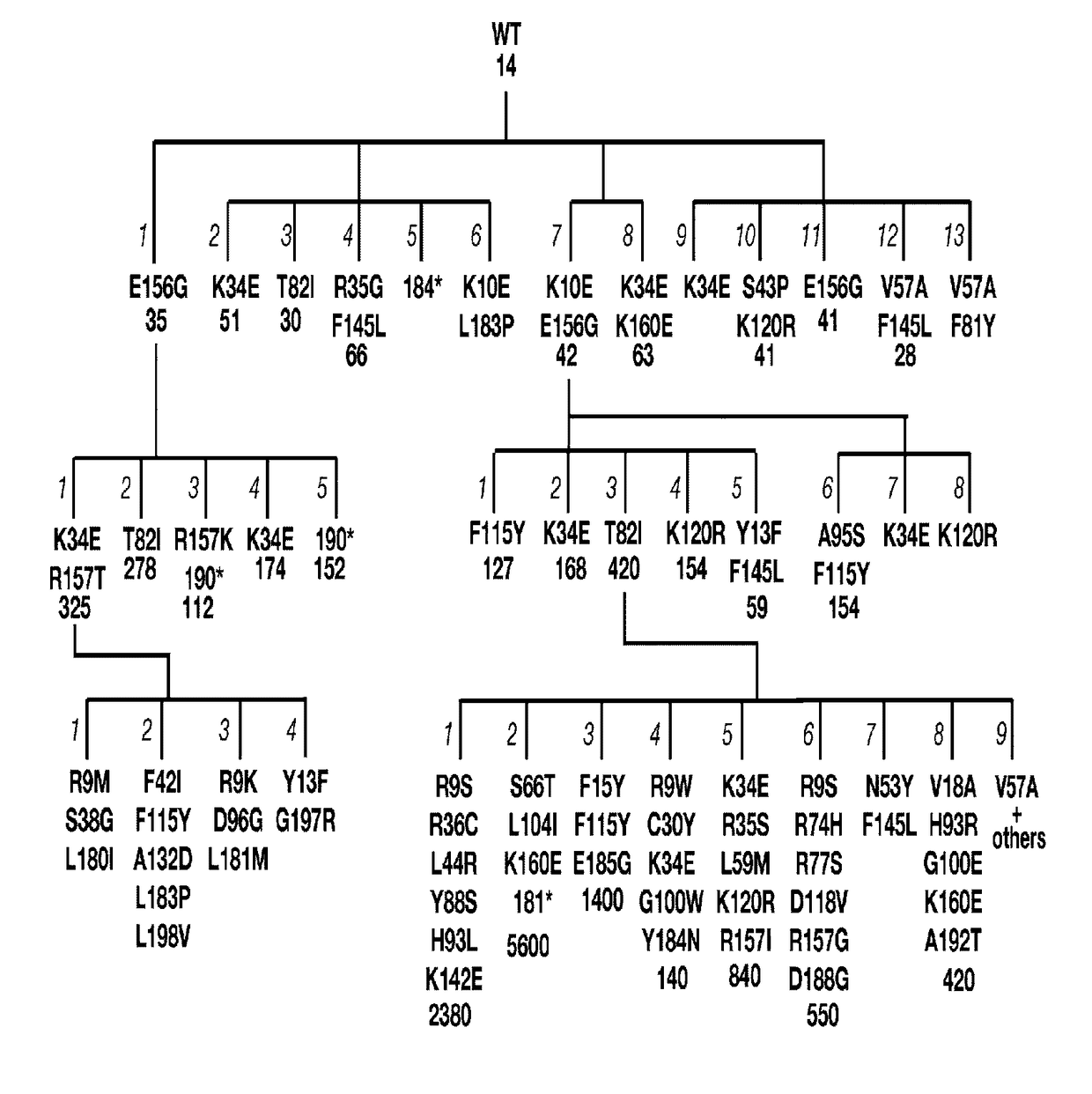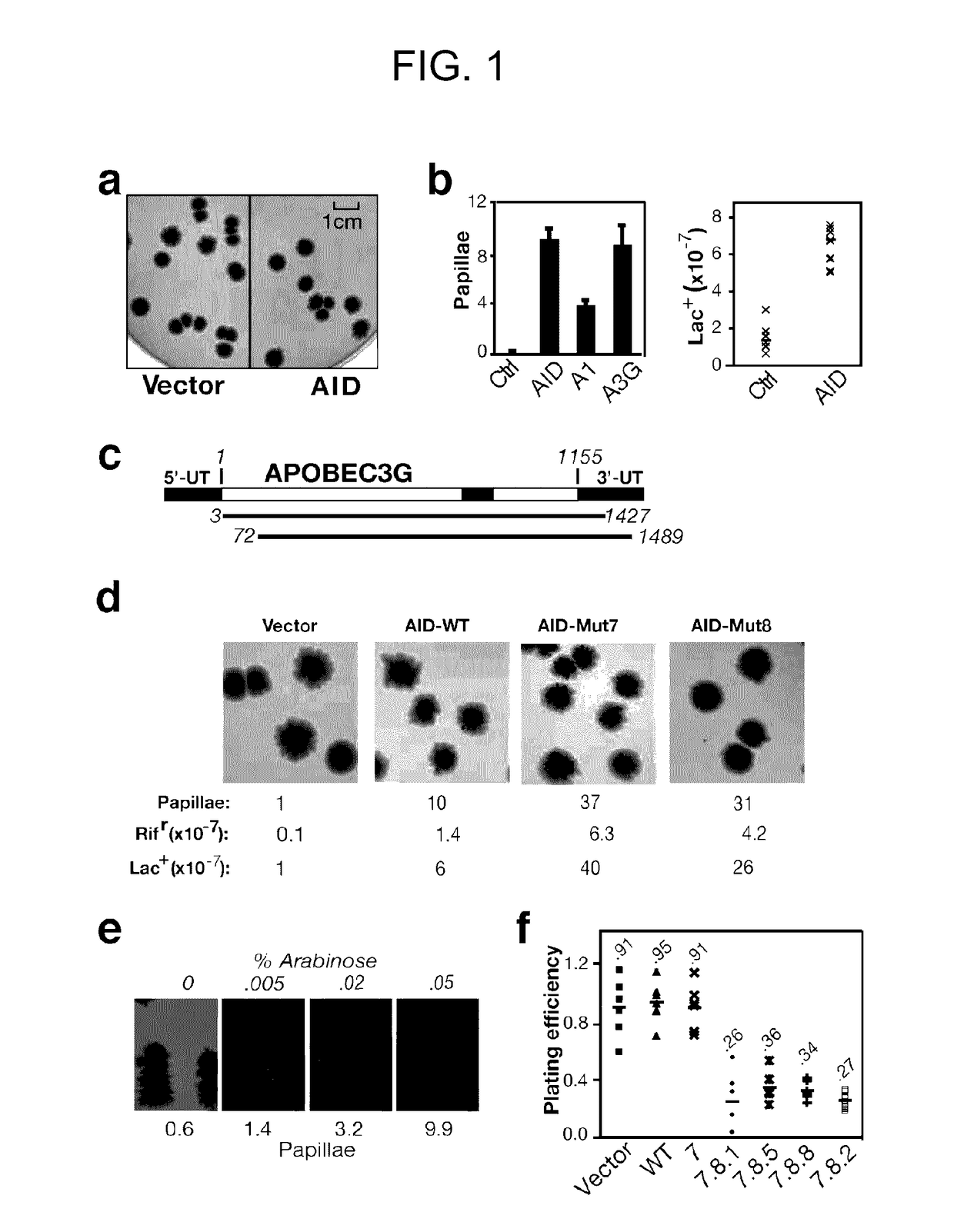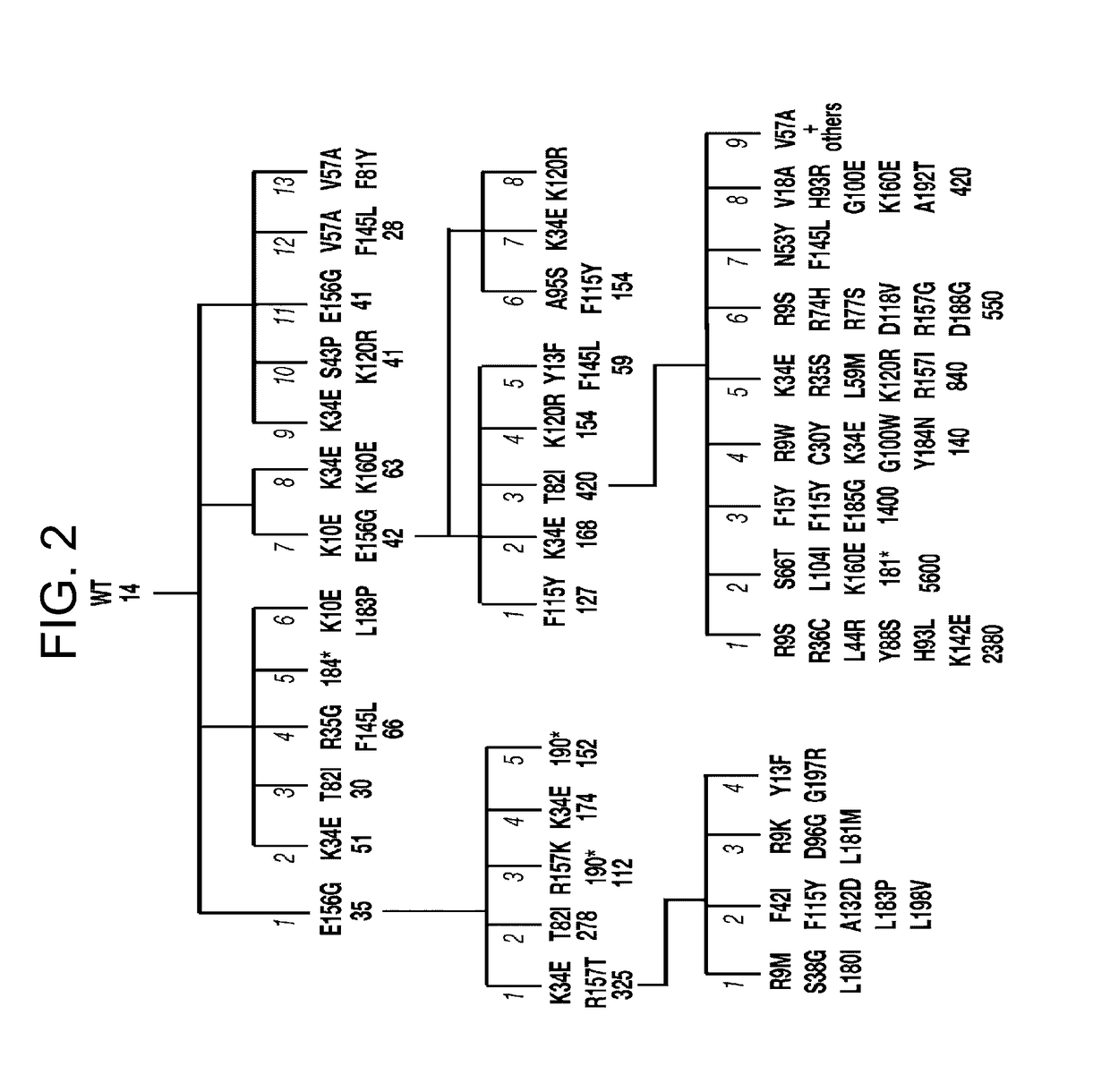Mutants of activation-induced cytidine deaminase (AID) and methods of use
a technology of activation-induced cytidine and cytidine, which is applied in the field of mutations of activation-induced cytidine deaminase (aid) and methods of use, can solve the problems of inability to achieve optimal affinity properties of native antibodies that have been isolated from individuals human or animal, inability to achieve optimal affinity properties, and inability to achieve optimal affinity.
- Summary
- Abstract
- Description
- Claims
- Application Information
AI Technical Summary
Benefits of technology
Problems solved by technology
Method used
Image
Examples
example 1
[0162]This example demonstrates a method of screening for active mutators of DNA using a papillation assay.
[0163]Papillation assays have been used to screen for E. coli mutants that are defective in some aspect of DNA repair (Nghiem et al., Proc. Natl. Acad. Sci. USA, 85: 2709-17 (1988) and Ruiz et al., J. Bacteriol., 175: 4985-89 (1993)).
[0164]For papillation assays, AID / APOBEC cDNAs in plasmid pTrc9944 were transformed into Escherichia coli K12 strain CC102 araΔ(lacproB)XIII carrying F′ lacI− Z− proAB+ episome in which the lacZ gene carries a GAG→GGG missense mutation at codon 461 (Cupples et al., Proc. Natl. Acad. Sci. USA, 86: 5345-49 (1989)), and plated on MacConkey-lactose agar (BD Biosciences) supplemented with ampicillin (100 μg / ml) and isopropyl β-D-1-thiogalactopyranoside (IPTG; 1 mM). Plates were incubated at 37° C. for 4 days with papilli becoming visible after 3 days.
[0165]The frequency of reversion of CC102 [pTrc99-AID / APOBEC] transformants to Lac+ was determined by pl...
example 2
[0170]This example demonstrates an assay to identify AID mutants.
[0171]First and second generation human AID mutant libraries were generated by error-prone PCR using Taq polymerase (2.5 U; Bioline) on 1 ng of template DNA with 1 μM forward and reverse primers (5′-ATGGAATTCATGGACAGCCTCTTG (SEQ ID NO: 81); 5′-CTGAAGCTTTCAAAGTCCCAAAGTA (SEQ ID NO: 82)), 250 μM-dNTPs, 10-mM-MgCl2 in Taq buffer at 94° C. (2 min), followed by 30 cycles of 94° C. (30 s), 65° C. (30 s) and, 72° C. (1 min). The third generation human AID mutant libraries were generated using Genemorph II Random Mutagenesis Kit (Stratagene) on 0.1 ng DNA template according to the manufacturer's instructions.
[0172]Papillation assays were performed as described in Example 1, except that plates were incubated at 37° C. for 3-6 days with papilli becoming visible after 3 days and their numbers increasing until day 7. For analysis of arabinose-inducible expression, AID was expressed in plasmid pBAD30 (Guzman et al., J. Bacteriol, 1...
example 3
[0179]This example demonstrates that the bacterial papillation assay can identify hot spots for AID mutants having increased activity.
[0180]FIG. 3a compares the primary sequence of human AID (SEQ ID NO: 2) containing specific mutations that confer increased activity with upmutations in the pufferfish (Fugu) AID sequence. Mutations at asterisked residues are deduced to confer increased mutator activity since they constitute the sole difference between at least one pair of AID sequences exhibiting >2-fold difference in mutation frequencies at rpoB. Residues that are double underlined indicate sites where substitutions have been identified in multiple independent upmutants but in the presence of one or more other substitutions. The box above or below the asterisked or double underlined residues shows the identity of the substitution mutations and the frequency with which each substitution was detected in the total of nine independent libraries. Residues where the corresponding position...
PUM
| Property | Measurement | Unit |
|---|---|---|
| time | aaaaa | aaaaa |
| time | aaaaa | aaaaa |
| time | aaaaa | aaaaa |
Abstract
Description
Claims
Application Information
 Login to View More
Login to View More - R&D
- Intellectual Property
- Life Sciences
- Materials
- Tech Scout
- Unparalleled Data Quality
- Higher Quality Content
- 60% Fewer Hallucinations
Browse by: Latest US Patents, China's latest patents, Technical Efficacy Thesaurus, Application Domain, Technology Topic, Popular Technical Reports.
© 2025 PatSnap. All rights reserved.Legal|Privacy policy|Modern Slavery Act Transparency Statement|Sitemap|About US| Contact US: help@patsnap.com



